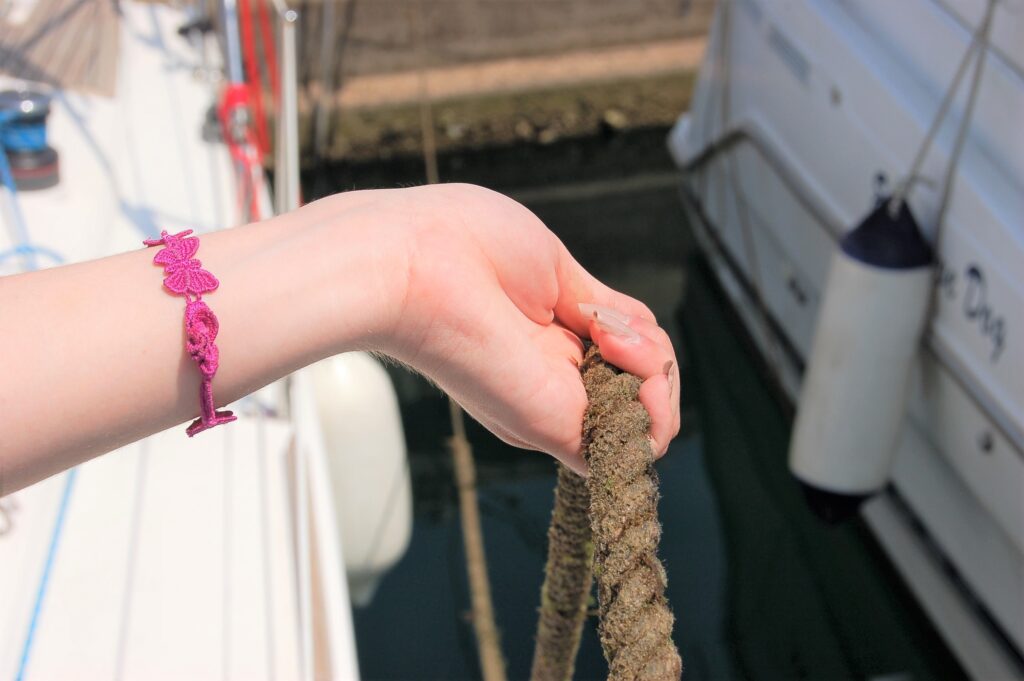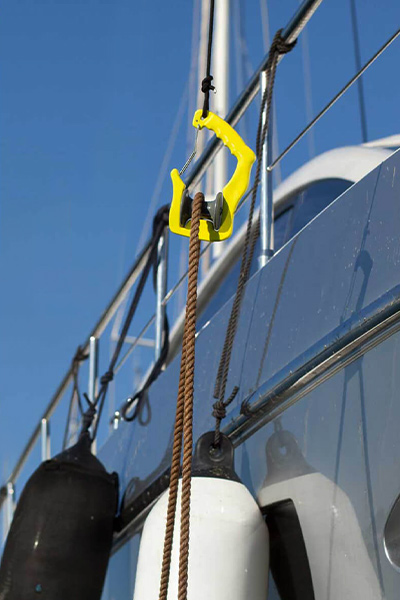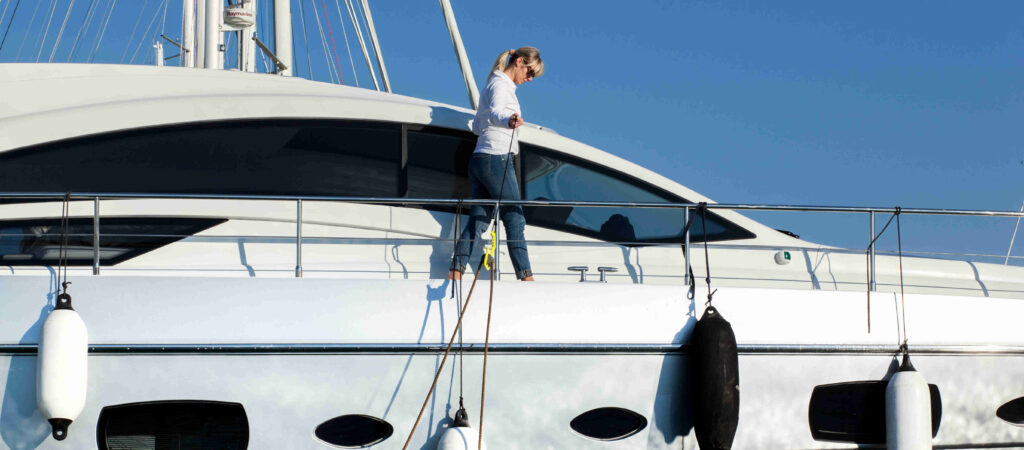Transferring the lazy line is a dirty job on the vessel. GHOOK has revolutionized and replaced the traditional method of manually transferring overgrown lazy lines, which often left vessel decks dirty and posed risks of hand injuries and collisions with other boats.
Understanding the Importance of Quick Mooring
Lazy line mooring is a common practice in marinas across the Mediterranean, necessitating skill and precision, especially in adverse weather conditions. Securing the boat swiftly and safely, without risking injury or collision with other vessels, is paramount.
Mooring to a Lazy Line: The Challenge
Lazy lines, also known as mooring lines, serve as substitutes for traditional anchors in marinas. Typically, a concrete block acts as the “dead anchor,” with one end of the mooring rope attached to it and the other end to the mooring cleat. Retrieving the lazy line from the seabed and tying it to the cleat should be straightforward. However, practical challenges arise:
Retrieving the lazy line from the bow proves difficult due to its depth and submerged condition.
First step
We recommend securing the lazy line to the bow with a stern line (starting with the one on the windward side) to the cleat on the dock before moving it from the stern to the bow. The key here is the speed of fixing the stern line to the dock cleat, where it’s best to promptly attach the windward stern line to the cleat and then carefully and slowly engage the engine forward to counteract the lateral force of the wind. For easier fixing of the loop, you can also use the Dockhook product.
Manual transfer with both hands
Traditional manual transfer from the stern involves using both hands, but it’s not without its challenges.
The lazy line, often concealed by algae, sharp shells, and mud, adds complexity to the task. This difficulty escalates when the lazy line is thicker, overgrown, and the vessel sits higher in the water. Consequently, the crew member must possess ample strength to maneuver the line from the stern to the bow cleat. Experience and practical skills are crucial, particularly when contending with adverse weather conditions.

Indirect transfer with GHOOK
GHOOK transforms the mooring process. Ghook’s wide rotating wheel swiftly propels it forward without requiring hands or deck contact. With single-handed operation, stability during passage is enhanced, while any debris from the line is ejected directly into the water, keeping the boat clean. Comparing to traditional mooring it is:
Accelerated Transfer: With GHOOK, transferring the lazy line from the stern to the bow is stable and up to three times faster.
Effortless Handling: Its ergonomic design allows for easy and single-handed operation, minimizing the risk of instability, especially in vessel roll.
Cleanliness: Keep your hands and boat deck clean, as GHOOK reduces direct contact with the dirty and overgrown lazy line.
Safety: Minimize the risk of hand injuries, as GHOOK ensures a secure grip and stable transfer.
Enhance Your Mooring Experience with GHOOK
Experience smoother and faster mooring operations with GHOOK. Order yours today and elevate your marina maneuvers to new heights of efficiency and safety.

GHOOK is available in three versions, each designed to facilitate and expedite the process of transferring mooring lines from the dock to the bow.
The standard GHOOK, without an extension, is suitable for smaller boats and sailboats up to approximately 7 meters in length.
For larger boats exceeding 7 meters, the GHOOK with a rope extension is recommended.
If your vessel has limited access from the stern to the bow or features a central walkway, the GHOOK Plus is the ideal choice. With the additional cleat provided, users can effortlessly pull the GHOOK from the stern to the bow using the rope that passes through the extra cleat.
In the video below, three different techniques of transfer are demonstrated:
- the traditional method with both hands,
- using with GHOOK Plus through additional pulley and
- GHOOK with a rope extension.
In the blog GHOOK applications for best mooring on the lazy line we describe proceedures and differences between them.
Conclusion
Mastering the art of Marina Maneuvres and mooring requires a combination of knowledge, experience, and effective teamwork with appropriate equipment.

